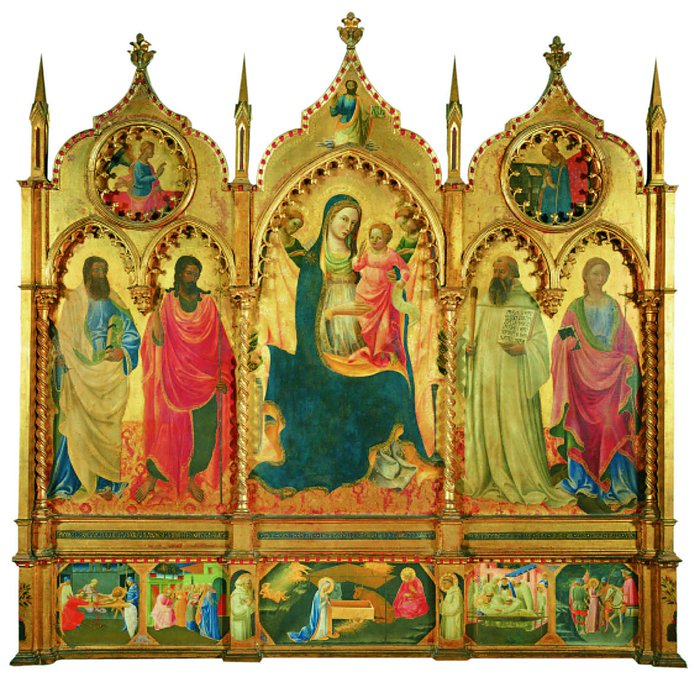Information about the artwork
- Artist/maker
- Andrea di Giusto
- Title
- Polyptych
- Date
- 1435
- Materials and Techniques
- Tempera on panel
- Dimensions
230x245 cm
- Location
-
Palazzo Pretorio Museum
First Floor
Our site saves small pieces of text information (cookies) on your device in order to deliver better content and for statistical purposes. You can disable the usage of cookies by changing the settings of your browser. By browsing our website without changing the browser settings you grant us permission to store that information on your device. I agree
230x245 cm

The polyptych painted for the Badia delle Sacca abbey near Prato by Andrea di Giusto, who had been the collaborator of Masaccio in Pisa, can be seen in the section From late Gothic to the Renaissance.The work is a partial copy of an important polyptych by Lorenzo Monaco for the Monte Oliveto abbey. With careful draughtsmanship and a rich colour-scheme Andrea di Giusto re-proposes its main figures ( with curious adaptations in the saints), while for the predella he also drew inspiration from Beato Agnelico.
The pupil of Bicci di Lorenzo and the collaborator of Masaccio in Pisa, this eclectic painter, halfway between Gothic tradition and Renaissance innovation, was also a fair copier. Perhaps for this reason the Olivetan monks of the Badia delle Sacca abbey near Prato asked him to copy for the high altar of their church the famous polyptych by Lorenzo Monaco for the Monte Oliveto abbey (now in the Accademia gallery in Florence), which had been completed in 1411. With meticulous draughtsmanship and a precious bright colour-scheme, di Giusto faithfully reproduced its main figures (curiously adapting the face of St. Taddeus, which he transformed into that of St. Margaret) and also probably part of the predella (the Monte Oliveto predella is lost but it is likely that di Giusto copied at least the Nativity from it, with the famous atmospheric night scene typical of Lorenzo Monaco). However he also added more recent references, copying the Imposition of John the Baptist’s name by Fra Angelico (part of a predella now in the SanMarcoMuseum in Florence). The painting of this important work, completed in 1435, probably favoured the assignment to Andrea di Giusto of another prestigious commission around 1438: the completion of the frescoes in the chapel of the Assumption in the Cathedral, which had been left unfinished by Paolo Uccello.
In the same section From late Gothic to the Renaissance there are also the polyptyches by Giovanni da Milano, Lorenzo Monaco and Pietro di Miniato.